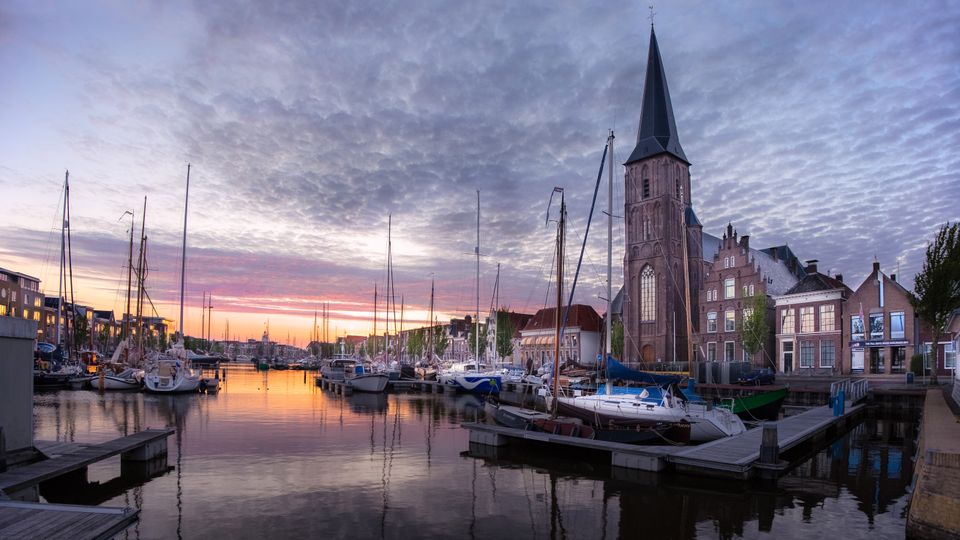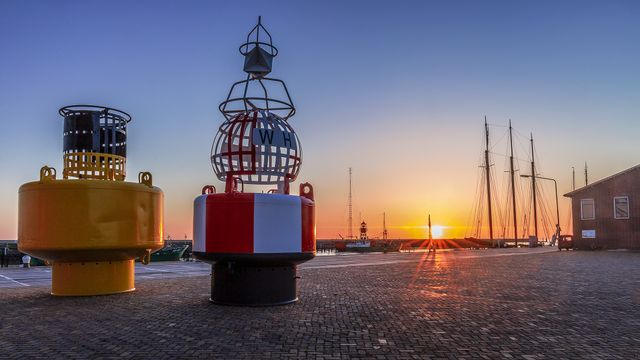Zuiderhaven
The Zuiderhaven was dug out around 1600 and from that time until 1994, this port was filled with shipyards. Many related companies, such as sail makers, mast and block makers, and anchor smiths, determined the image of this port for centuries. Similarly, the presence of timber merchants. In addition to a flourishing period of, for example, herring fishing and whaling, there was a lively trade with various countries. For example, rye, wheat, wood, fur, beeswax, and bleach were imported from the Baltic states. The exports consisted of textiles, bricks and roof tiles, wine, herring, and spices. From 1645 to 1795, the Frisian Admiralty was established at the Zuiderhaven.
Town of Admiralty
Harlingen has an illustrious, nautical past and was of great value for the battles on land and on water. In 1500 a fortress was built by demand of the Dukes of Saxony. This so-called “Blokhuis” offered the town, its port, and its hinterland safety during troubling times, such as the Revolt against the Spaniards in 1648. This revolt caused a period of prosperity in the trade in the Northern Netherlands. It was also during this period that Harlingen became a naval bastion of the Frisian Admiralty. Harlingen was the last port of the Frisian navy. Until 1795, the Zuiderhaven was full of the ships of the Frisian fleet. At its peak, Harlingen knew four ship ramps where ships were built. The significance of the Admiralty can still be seen today in the large number of monumental buildings in Harlingen.
More about the Admiralty of Friesland
Port warden and Bookings
The port is divided into the Noorderhaven and the Zuiderhaven. Both are tidal ports; the Noorderhaven is suitable for vessels with a draught of up to 2.20 m and the Zuiderhaven is for larger and deeper vessels. For more information and bookings click on the link below.
Practical information and bookings


